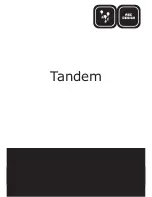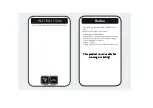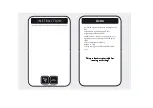
Universal dimmer actuators GDA2K-400 KNX / GDA4K-400 KNX
pdated: Mai-17 (Subject to changes) Page 59 of 63
4.6.3 Entering scenes without telegrams
Instead of defining scenes individually by telegram, this can be done in advance in the ETS.
This merely requires the setting of the
All channel scene statuses
parameter (
Scenes
parameter page)
to
overwrite at download
.
Accordingly, the required status can be selected for each of the 8 possible scene numbers in a channel
(=
Status after download
parameter).
The scenes are programmed into the device after the download has been completed.
Later changes via teach in telegrams are possible if required and they can be permitted or blocked via
parameter.
4.7 Storing light scenes in a button
Scenes are normally stored in the device.
Object 5 (call up/save scenes) is used for this purpose.
However, if the light scenes are to be stored
externally
, for example with a scene-capable
button, the following steps can be taken:
The device has one dimming object (dimming value) and one feedback object (feedback in %) per
channel.
Thus, 2 group addresses are used, hereafter called “Gr.adr.1” and “Gr.adr.2”.
4.7.1 Allocation of group addresses and setting of object flags
Object
Connect with
set to
sending
Flags
C
R
W
T
B
UT
T
ON
Brightness value telegrams
Gr.adr.1
yes
✓
-
✓
✓
Gr.adr.2
no
D
IMME
R
Dimming value
Gr.adr.1
x
✓
-
✓
x
Feedback in %
Gr.adr.1
no
✓
✓
-
x
Gr.adr.2
yes
Feedback to the dimmer should
not
be configured for
cyclical sending
.
14
Object flags: Communication, read, write, transfer, update.
x = user-defined





































